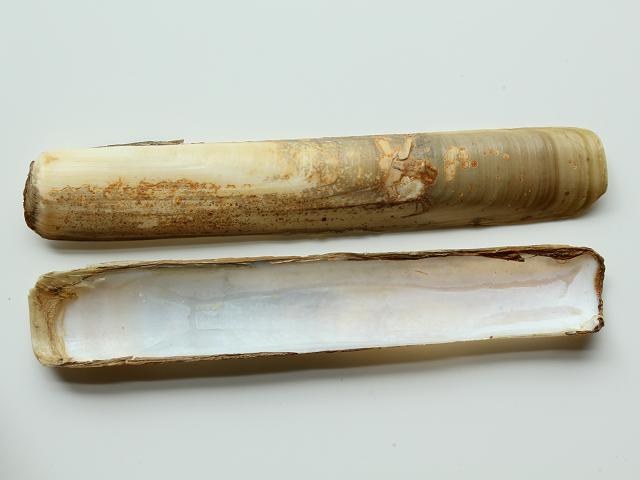
APHOTOMARINE
An educational resource dedicated mainly to the photography
and diversity of marine life that can be found in coastal waters
and intertidal areas of Great Britain and Ireland by David Fenwick.

Solen marginatus Pulteney, 1799 - Grooved razor-shell (Marine bivalve images)
Scroll down and rollover titles to change screen image or click on title to view image.
Grooved Razor-shell
Solen marginatus
- valve pair 1
Solen marginatus
- valve pair 1
Grooved Razor-shell
Solen marginatus
- valve pair 2
Grooved Razor-shell
Solen marginatus
- grooved valve 1
Grooved Razor-shell
Solen marginatus
- valve interior close-up 1
Grooved Razor-shell
Solen marginatus
- single valve / exterior 1
Grooved Razor-shell
Solen marginatus
- single valve / interior 1
Specimen above was purchased from Guido T. Poppe - Philippe Poppe, Conchology, Inc., images of shells taken 17.05.12.
Grooved Razor-shell
Solen marginatus
- in bait collectors bucket 1
Grooved Razor-shell
Solen marginatus
- in bait collectors bucket 2
Images above taken on the lowershore at Helford, Cornwall, 28.04.17. A bait collector was salting for the species and was taking numerous small specimens. Species verified by Simon Taylor of The Conchological Society of Great Britain and Ireland.
Helford and Helford Passage are part of a Voluntary Marine Conservation Zone. I have seen people use various methods of taking Grooved Razor shell from the Helford area of the Fal, and it is likely if the pressure on the species continues the species will fail to survive in that area. Grooved Razor shell is not a common species in Cornwall and short term gain for eating or taking for fishing bait will not ensure its survival.
Scientific and European Names:
Solen marginatus, Solen vagina, Grooved-razor shell, Grooved-razor, Razor clam, Pencil bait, Couteau gaine, Messerscheide-Muschel.

The main objective of this website is in furthering environmental awareness and education through the medium of photography. To increase awareness and access to the wildlife of the region and help
people find and identify it. Sometimes the difference between species is obvious but many species can only be determined by observing microscopic characteristics that are specific to any one species.